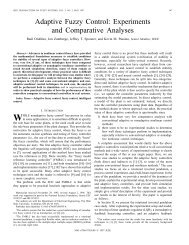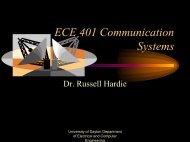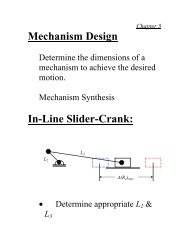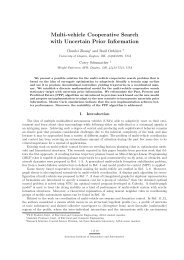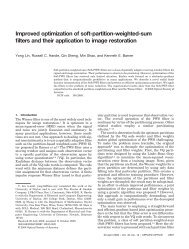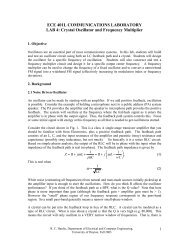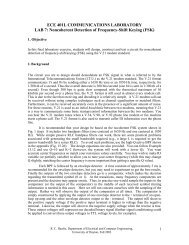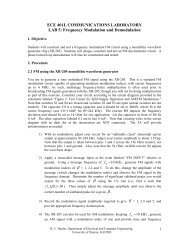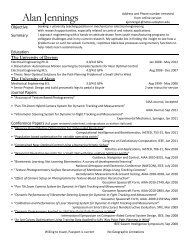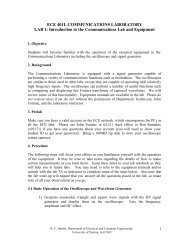here - University of Dayton : Homepages
here - University of Dayton : Homepages
here - University of Dayton : Homepages
You also want an ePaper? Increase the reach of your titles
YUMPU automatically turns print PDFs into web optimized ePapers that Google loves.
Friday 5:50–6:15 109 Oelman Hall<br />
Non-embeddable Quasi-Derived Designs<br />
Tariq Alraqad<br />
Central Michigan <strong>University</strong><br />
Abstract<br />
A derived design <strong>of</strong> a symmetric (v, k, λ)–design D, is a 2–(k, λ, λ − 1) design D ′ obtained from D<br />
by removing a block B and replacing every other block A by A B. A 2-design that has parameters<br />
<strong>of</strong> a derived design (equivalently k = λ + 1) is called a quasi-derived design. Moreover, it is said to be<br />
embeddable if it is the derived design <strong>of</strong> a symmetric design.<br />
The main result is a method <strong>of</strong> constructing a non-embeddable quasi-derived design from a quasiderived<br />
design and an α-resolvable design. This method is a generalization <strong>of</strong> techniques used by van<br />
Lint and Tonchev (1984,1993) and Kageyama and Miao (1996). As applications, several new families<br />
<strong>of</strong> non-embeddable quasi-derived designs are constructed.<br />
Friday 6:15–6:40 109 Oelman Hall<br />
Classification <strong>of</strong> Orthogonal Arrays by Integer Programming<br />
Dursun Bulutoglu<br />
Air Force Institute <strong>of</strong> Technology<br />
Abstract<br />
In Bulutoglu and Margot (2007) the problem <strong>of</strong> classifying all isomorphism classes <strong>of</strong> OA(N, k, s, t)s<br />
is shown to be equivalent to finding all isomorphism classes <strong>of</strong> non-negative integer solutions to a system<br />
<strong>of</strong> linear equations under the symmetry group <strong>of</strong> the system <strong>of</strong> equations. In this paper a branchand-cut<br />
algorithm developed by Margot (2002, 2003a, 2003b, 2005) for solving integer programming<br />
problems with large symmetry groups is used to find all non-isomorphic OA(24, 7, 2, 2)s, OA(24, k, 2, 3)s<br />
for 6 ≤ k ≤ 11, OA(32, k, 2, 3)s for 6 ≤ k ≤ 11, OA(40, k, 2, 3)s for 6 ≤ k ≤ 10, OA(48, k, 2, 3)s for 6 ≤<br />
k ≤ 8, OA(56, k, 2, 3)s, OA(80, k, 2, 4)s, OA(112, k, 2, 4)s, for k = 6, 7, OA(64, k, 2, 4), OA(96, k, 2, 4)s<br />
for k = 7, 8, and OA(144, k, 2, 4)s for k = 8, 9. Moreover further applications to classifying covering<br />
arrays with the minimum number <strong>of</strong> runs and packing arrays with the maximum number <strong>of</strong> runs are<br />
presented. I am going to talk about these new developments regarding orthogonal arrays.<br />
4




